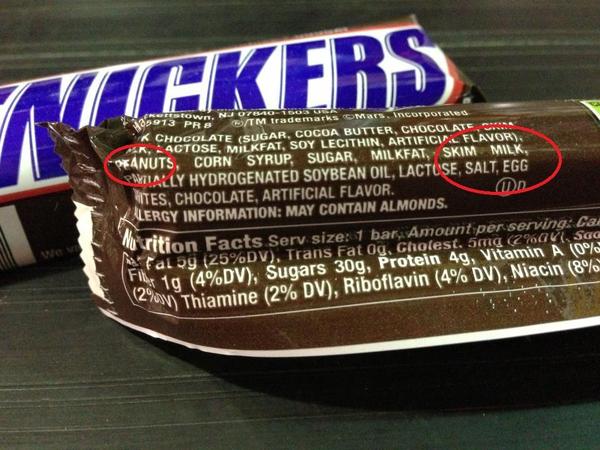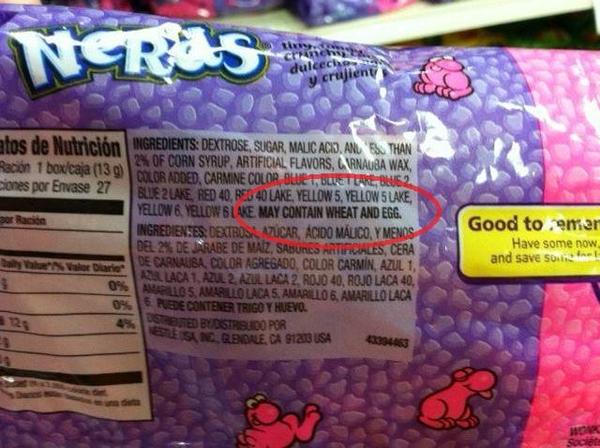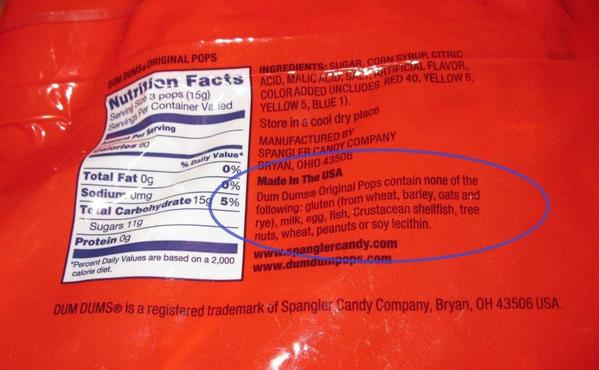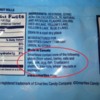What You Need to Know About Food Labels to Remain Safe This Halloween
The Food Allergen Labeling and Consumer Protection Act (FALCPA) has greatly improved labeling for the 8 major allergens - milk, soy, egg, peanut, tree nut, wheat, fish, and crustacean shellfish. The law requires that all FDA regulated foods must list ingredients which contain one or more of the major food allergens in one of two ways:
1) The common or usual name of the major food allergen must be followed by the food source in parentheses in the list of the ingredients. This will occur the first time the major food allergen is listed and does not have to be repeated each time the name of the specific food allergen appears.
Examples: "lecithin (soy)," "flour (wheat)," and "whey (milk)"
2) There may be a section after or near the ingredient list called “Contains”. After the word “Contains”, there must be listed the name of the food source from which the major food allergen is derived.
Example: "Contains Wheat, Milk, and Soy."
The FDA does not require advisory statements, such as “may contain...” Any advisory statements you find on packaging is completely voluntary.
If you see an advisory statement on a package for the food allergens you manage, it’s safest to avoid those foods. Studies have shown that there is a chance that foods with advisory statements can contain the food allergen and can cause an allergic reaction.
Some additional important points for checking Halloween candy:
- Always read the full label of every candy.
- Different sizes of the same product may have different ingredients.
- Re-bagged candy may have different labels than the candy made and sold directly by the company.
Following are some images of candy currently in the store which illustrate key points about the importance of reading labels for food allergens:
Snickers® (above): The FALCPA law does not require that food packaging have a “Contains” section. The manufacturer may choose to solely list the major allergen(s) in the ingredient statement.
Note that this Snickers bar does not have a "Contains" statement. The major allergens peanut, milk and egg are all listed within the ingredient statement itself.
If a "Contains" statement is present, be sure to read the contains statement and the full ingredient listing to identify all allergens. Manufacturers can list the major allergen(s) in either place on the package.
The advisory statement on this package indicates the product may contain almonds. Advisory statements are a voluntary labeling practice by this company and are not mandated by law to be present on packages.
Nerds® (above): This voluntary advisory statement on Nerds indicates the product "may contain wheat and egg."
Peeps® (above). This voluntary advisory statement on Peeps indicates the product "may contain milk."
Laffy Taffy®, large size (above). This large size Laffy Taffy contains egg as an ingredient.
Laffy Taffy®, small size (above). A smaller size Laffy Taffy does not have egg on the ingredient statement. This is a prime example of how the same food made in different sizes may have different ingredients (and allergens).
Brach's Candy Corn® (above) contains sesame oil.
The allergen information statement is a voluntary advisory statement by this company to alert customers that its product may contain several of the major allergens. Always check the front and back of packages for advisory statements.
Dum Dums® (above) uses a voluntary statement to tell consumers that it's free of the major allergens listed on the package. Be aware that during holidays, candies can be re-bagged into mixes of various candies. For this reason, Dum Dums provides information about how to tell if your Dum Dums were bagged directly by Spangler or re-bagged by another company and may have a different allergen statement.
Smarties® Candy Rolls (made by Smarties Candy Company, Union, NJ) features a voluntary statement to tell consumers that it's free of the major allergens listed on the package.
For more information on how to stay safe with food allergies this Halloween, visit KFA's resource library on holiday celebrations.
http://www.kidswithfoodallergi...c.php?topic=holidays
Kids With Food Allergies Foundation (KFA) is a growing national nonprofit organization of 25,000 individuals, families and businesses. Its rapid growth has been spurred by the unprecedented rise in food allergies, which affect about 1 in every 12 children.









Comments (11)